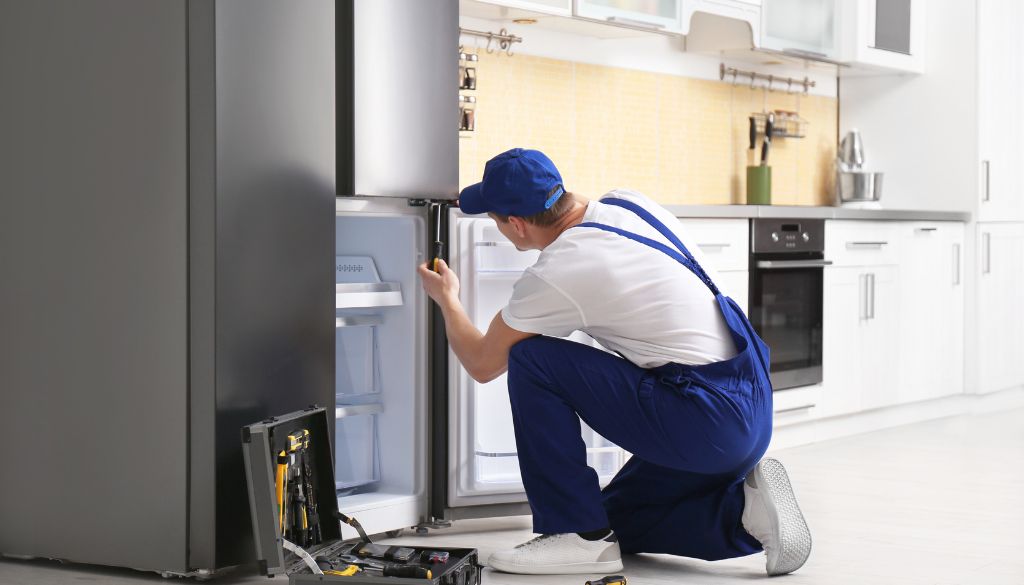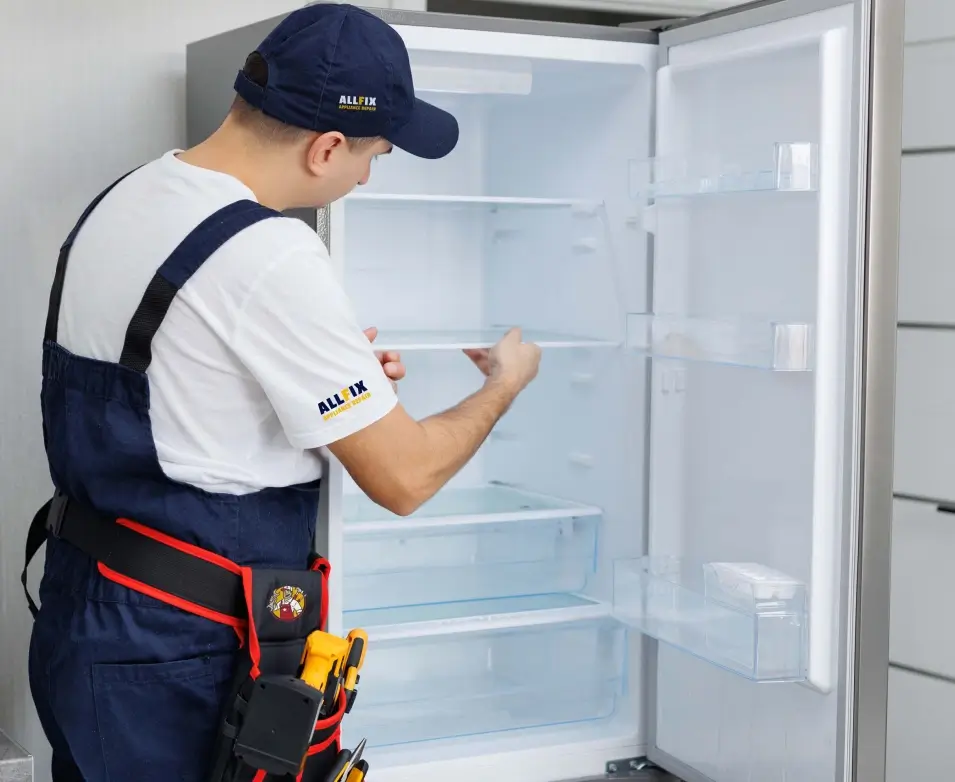If your refrigerator isn’t cooling properly, it can quickly become a source of stress. No one wants spoiled food, especially when so much depends on our fridge running smoothly. But don’t worry! We’re here to guide you through some of the most common causes of this problem, possible DIY fixes, and when it’s time to call a professional fridge repair service.
Common Reasons Your Refrigerator Might Not Be Cooling
- Dirty Condenser Coils: Condenser coils, usually located at the back or bottom of the fridge, help release heat from the unit. When these coils gather dust, they can’t do their job effectively, causing the fridge to struggle to stay cool. Cleaning the coils every six months can help. Simply unplug your fridge, pull it out, and use a vacuum to carefully remove any dust.
- Blocked Air Vents: Your refrigerator relies on proper airflow between the freezer and refrigerator compartments. If large items are blocking the vents, it can prevent cool air from circulating, leading to uneven temperatures. Make sure no items are directly in front of or covering the vents in both sections.
- Faulty Evaporator Fan: The evaporator fan moves air over the evaporator coils to distribute cool air throughout the refrigerator. If you hear strange noises from inside the fridge, a malfunctioning fan could be the issue. You might need to replace it, especially if it’s noisy or not spinning correctly. For this, it’s best to contact a repair technician.
- Temperature Control Thermostat Issues: If your thermostat isn’t functioning correctly, it can cause the compressor and fans to either overwork or underperform. A simple way to test the thermostat is by adjusting it from its lowest to highest setting. If you don’t hear a click, it might be time to replace it.
- Clogged Defrost Drain: A clogged defrost drain can cause water to accumulate and freeze, blocking airflow. Use warm water to flush the drain, or try using a turkey baster to remove the clog. If this doesn’t work, a professional can help ensure it’s clear.
DIY Troubleshooting Tips
For simple issues like cleaning coils or checking vents, you can often handle the fix yourself. However, be cautious when it comes to handling electrical components or refrigerants. Here’s a quick DIY checklist for tackling non-cooling issues:
- Step 1: Check the thermostat settings and adjust if needed.
- Step 2: Ensure there’s nothing blocking the vents.
- Step 3: Clean the condenser coils using a vacuum or brush.
- Step 4: Inspect door seals for any gaps and replace them if they’re worn or cracked.
- Step 5: Test the evaporator fan for any unusual noises.
If these steps don’t resolve the issue, it might be time to get professional help.
When to Reach Us for Professional Repair Services
If your refrigerator still isn’t cooling after these DIY attempts, it could be due to a more complex issue like a compressor failure or control board problem, which requires a professionals’ expertise.
By scheduling repairs online, you won’t have to wait long to get your fridge running again. Our team arrives with a fully-stocked truck, equipped to tackle most repairs on the spot. Whether it’s a defrost system issue, a faulty thermostat, or a fan motor replacement, we’re here to help.
Refrigerator Not Cooling? Prevent Future Cooling Issues
Regular maintenance can prevent many common refrigerator problems. Here are a few tips to keep your fridge running efficiently:
- Keep Coils Clean: Dust and vacuum the coils every six months.
- Check Seals and Gaskets: Replace door gaskets if they become loose to prevent cold air leaks.
- Avoid Overloading: Allow proper airflow by not overcrowding shelves, especially near vents.
If you’re experiencing cooling issues or just want a professional check-up, reach out to us for reliable and affordable appliance repair. All Fix Appliance Repair experts are here to keep your fridge in top shape, ensuring it runs smoothly and efficiently.


